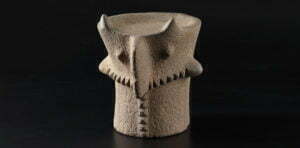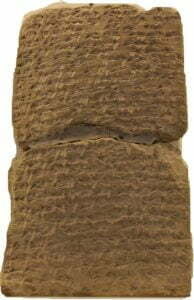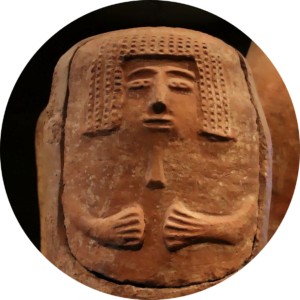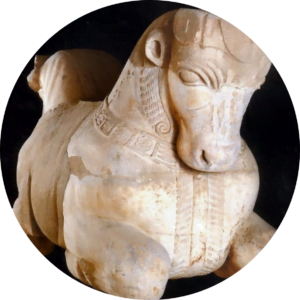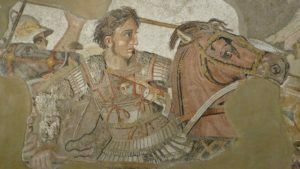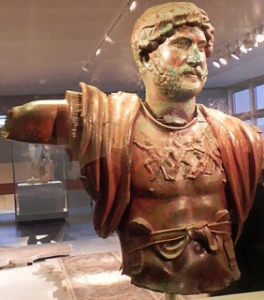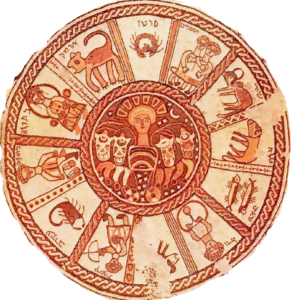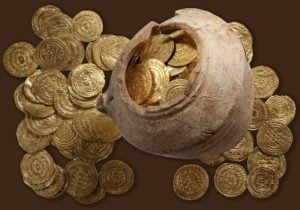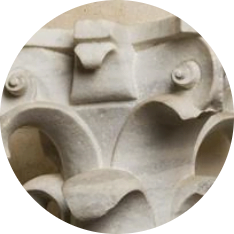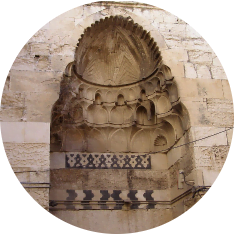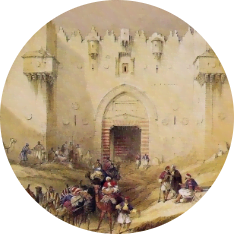The Persian period in the southern Levant is a time of both continuity and profound change. A time of strong cultural influences from both the east and the west. It is considered both a biblical era, but also the beginning of the classical age. During the Persian period, the vast majority of the Ancient Near East came under the hegemony of the Achaemenid monarchs who founded the Persian Empire, the largest empire to that date, which in its heyday stretched from the Balkans through Asia Minor to eastern Asia (modern Afghanistan), and further south from Libya, through Egypt, the southern Levant, and Mesopotamia as far as the Hindus valley (Fig. 1).
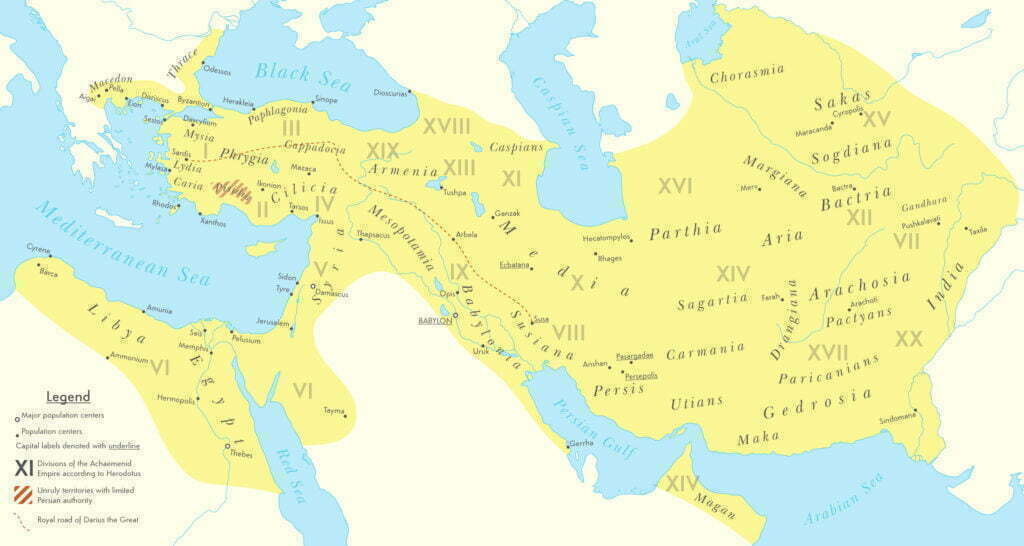

The Achaemenids, named after their mythological ancestor, Achaemenes, were an Iranian speaking group who had managed to establish an independent kingdom with its capitol Anshan in the territory of Elam in the 8th century BCE. As Elam grew weaker due to its constant conflicts with Assyria, the Achaemenids became increasingly stronger and more independent. Sometime during the mid-6th century BCE, Cyrus the Great (ca. 600-530 BCE), the founding father of the Persian empire, had managed to conquer the kingdom of Media. He then continued west conquering Asia Minor before turning east to battle the Neo-Babylonians in the battle of Opis. In Oct. 539 BCE, the forces of Cyrus marched into Babylon and secured the vast territory of the Neo-Babylonian empire. It is unclear whether Cyrus conquered the southern Levant before or after Babylon, however it appears Egypt had managed to reestablish its dominance over the region for a short period of time beforehand.
In order to secure the loyalty of the various peoples that were now under the hegemony of the newly founded Persian empire, Cyrus decided to take a far more benign approach to that of the former Neo-Babylonian empire. He established several key cities throughout the empire as official Achaemenid capitals, which preserved the status of their socio-economic elites, and had also issued an edict that allowed peoples who were deported by the Neo-Babylonians to return to their homes, restore their temples, and practice their religions freely. This proclamation, known as the Cyrus Cylinder (Fig. 2) which doesn’t mention Jerusalem, is echoed in the Hebrew bible several times (Ezr. 1: 1-4; 6: 1-12; 2 Chr. 36: 22-23) referring specifically to the Jews in Babylon who were permitted to return to Judah, known in the Persian period as Yehud, and rebuild their temple. This novel approach awarded Cyrus much popularity across the empire, and the Hebrew bible even refers to him as a messiah (Isa. 45: 1).
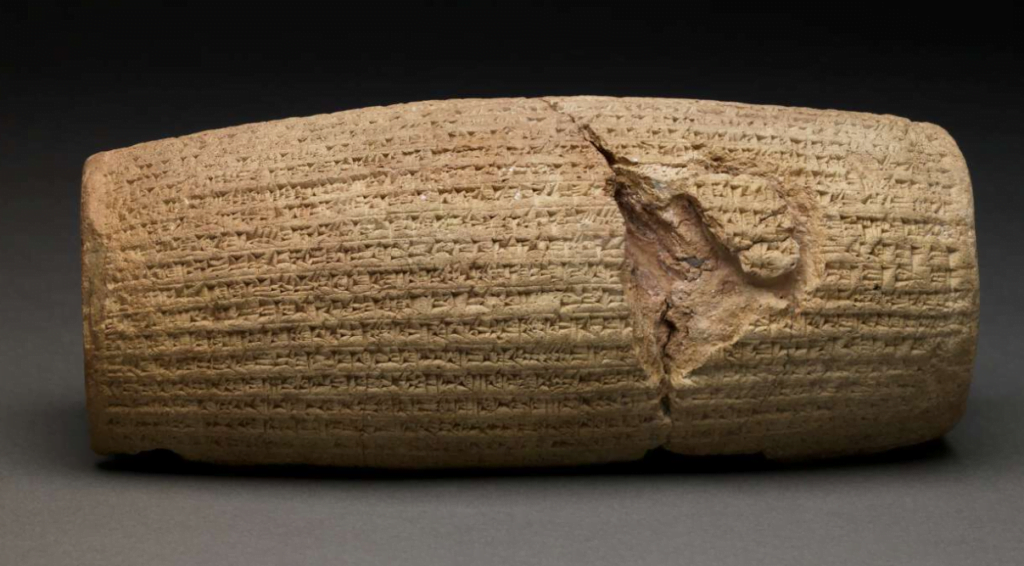

The entire southern Levant became part of the Abar Nahara satrapy, which in the time of Cyrus consisted of all the land to the west of the Euphrates, including Syria, Phoenicia, and Judah. After the death of Cyrus on the battlefield in 530 BCE, his son and heir Cambyses II (530-522 BCE) took the throne and continued the expansion of the Persian empire, turning his focus to the only major power in the region, Egypt. The southern Levantine coast played a key role in the conquest of Egypt and according to written sources the base of operations against Egypt was set at Akko. In the past the ancient harbor at Akko, which is still partly visible today, was thought to have been constructed during the Persian period, however recent studies indicate that this harbor was first constructed in the Hellenistic period, and that the old harbor – or anchorage, was situated in a lagoon at the feet of Tel Akko which was silted up and blocked during the Persian period. In preparation of the invasion, Cambyses erected the Persian navy using the fleets of the city-states of Phoenicia and Asia Minor. According to Herodotus (III.19.3) the Phoenicians offered their assistance freely and willingly not only against Egypt, but also later when Persia turned to conquer Greece. After Egypt was conquered in 525 BCE the southern Levantine coast became the most important part of the satrapy, and the three most prominent Phoenician city-states; Tyre, Sidon, and Arwad, were awarded dominance over the coast from Gaza in the south to the gulf of Iskenderun in the north. It appears Gaza was under direct Persian rule and a series of forts, which also served as administrative centers, were founded in the southern part of the Levant and in the Sinai Peninsula in sites such as Tel Haror, Tel Sera, Tell el-Far`ah (south), and Tel Qatif (Ruqeish), in order to assist the Persian army in case of an Egyptian rebellion.
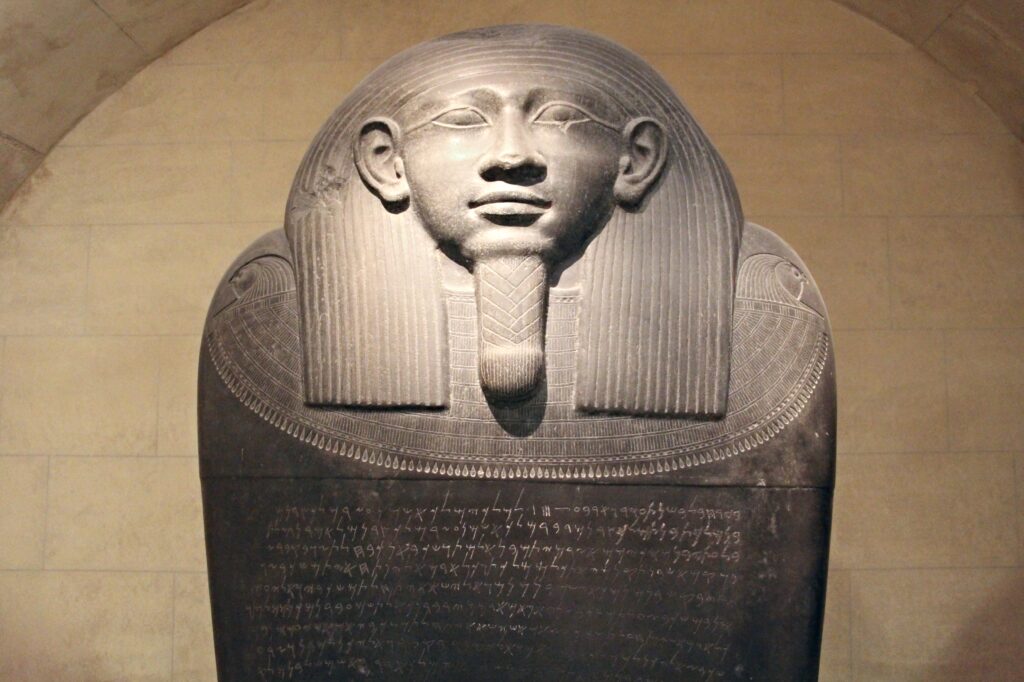

Among the Phoenician city-states, Sidon was the most powerful and important during the Persian period. The inscription on the Eshmunezer II sarcophagus (Fig. 3), found in the Magharet Abloun royal necropolis in Sidon, stated that for the great deeds Eshmunezer II had done, the king of kings gave Sidon the lands of grain, Dor and Jaffa (sometimes translated as the lands of Dagon). Sidon also enjoyed the most favorable relations with the Achaemenid court. It, or rather Bostan es-Sheik, a site some 3km north of Sidon, was chosen as the seat of the Persian governor. A temple displaying Achaemenid architecture was erected there, and it even housed a royal garden (paradeisos). It is the only site in the southern Levant in which true Achaemenid architectural elements were found (Fig. 4).


In 522 BCE, Cambyses died on the battlefield, and Darius I (522-486 BCE) seized the throne. After establishing his control over the empire, Darius enacts several dramatic reforms. The empire was reorganized into twenty satrapies instead of seven. A new sophisticated road and post system was established, connecting the farthest regions of the empire. Darius also introduced coinage and established a monetary system of imperial coins. And finally, he institutionalized Zoroastrianism as the official religion of the empire and the royal family, and Ahura Mazda as its chief deity. Darius was also the first monarch to attempt expanding the Persian empire into Europe, a conflict known as the Greco-Persian Wars.
Unlike previously thought, during the Persian period the southern Levant experienced a remarkable era of building activities and urbanization, especially along the coast. Many settlements, such as Beirut, Dor, and Ashkelon were rebuilt, renewed, and were further expanded, sometimes after an occupational gap. Many new, small, and often fortified settlements such as Tel Megadim, Nahal Tut, and Apollonia dotted the coast. In recent years a large number of small forts and/or agricultural estates founded in the Persian period were also found further inland, in the Judean Mountains, Idumea, Samaria, and Transjordan, however it appears these regions were more densely populated only later in the Persian period, likely after Egypt began to revolt against Persia.
The books of Ezra and Nehemiah speak about the return of tens of thousands of Jews to the province of Yehud, and especially to Jerusalem. However, many archaeologists suggest that the archaeological record indicates that during this period Jerusalem was a small, ca. 2.5 hectares town restricted to the eastern ridge (City of David), with a population of a few thousands to a few hundreds of people. Other studies suggest that the Persian and early Hellenistic period town was restricted to the central part of the ridge with almost no evidence of habitation in the City of David. Recent excavations in the Givati Parking Lot indicates that there was also some activity in the western slope. Several years ago, the late Eilat Mazar uncovered part of the city wall which she maintained was constructed during the Persian period as described by Nehemiah (6: 15), giving credibility to the biblical narrative. However, this dating was refuted by others as there is little evidence that the southeastern part of the city was populated at that time. It is however noteworthy to mention another recent theory that suggests that the ancient tell of Jerusalem, dated to the Bronze, Iron, and Persian periods, was found on the temple Mount, which is the size of ca. 5 hectares, more than suitable for a large town. This tell was thoroughly levelled and thickened during the early Roman period, likely as part of Herod’s renovation of the temple, therefore our knowledge of pre-Roman Jerusalem is extremely restricted. Nevertheless, it seems that during the first half of the Persian period, Jerusalem was not the administrative center of Yehud but rather, Ramat Rahel, which also had a royal garden likely similar to the one found at Bostan es-Sheik.
Although most of the architectural traditions of the Iron Age continue into the Persian period, there are two major changes. From the 5th century BCE, there was a conscious attempt at city-planning according to a Hippodamian plan with streets that intersect at right angles forming a grid. Examples of such attempts can be seen at sites such as Dor, Megiddo and Maresha (Fig. 5). However, since many of the settlements in the southern Levant were constructed on artificial, and often fortified mounds, their city plan had to conform with its preexisting contour. The second major change, which became a hallmark of the Persian period, is the widespread adoption and use of the courtyard house plan throughout the southern Levant for both private and public architecture. This plan was employed for structures of various function, including forts, temples, administrative and domestic structures and was even the template for newly founded settlements.
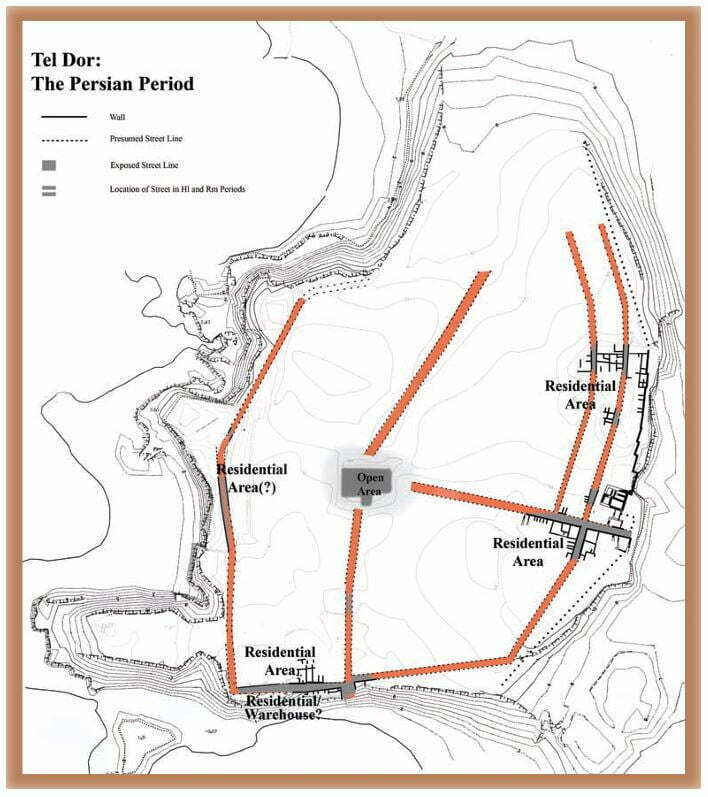

Several notable changes were also recorded in the cultic material culture of the Persian period. Terracotta figurines both continue Iron Age traditions, employing the image of a naked female supporting her chest, but also introduce many new forms. During this period the image of clothed pregnant females become very popular. Interestingly, during the Persian period, such figurines are found not only on land, but also in great numbers underwater, especially near Tyre. Male figurines also appear in greater numbers than in earlier periods, mainly displaying the image of an enthroned bearded male. Another extremely popular figurine of the period is the ‘Persian Rider’ figurine, showing a rider sitting on a horse (Fig. 6). This last figurine was popular throughout the empire and may be related to the establishment of the complex road and post system by Darius I. However, it should be mentioned here that almost no figurines dated to the Persian period were found in Yehud. Another cultic object that became popular during the Persian period was the cubical incense altar (Fig. 7). These small, cube shaped objects with four legs, first appear during the Iron Age, however during the Persian period they were found in abundance, mainly in cultic contexts, and may reflect a rise in incense trade from South Arabia. Some 200 of these altars were found in the ‘Solar Temple’ at Lachish alone. Another interesting phenomenon, which should likely be interpreted in a cultic context, that becomes widely popular during the Persian period is that of dog burials. During this period, many dog burials sites were found mainly along the coast but also in sites further inland. Among these, the largest dog-burial site in the southern Levant, where over 1200 dog burials were found, is Ashkelon. At Ashkelon the dog remains were found buried in shallow unmarked pits. The dogs were placed on their side with their tail tucked between their hind legs (Fig. 8). No signs of violence or butchery marks were noticed on the skeletal remains and no evidence of burial offerings were noted. The majority of the dogs found were less than 6 months old, some only a few days old. The age and sex of the dog does not fit that of a normal dog population, therefore it seems the dogs did not all perish at the same time, but rather, over a period of ca. 80 years between the 5th and 4th centuries BCE. The late Larry Stager, followed by others, suggested this was a dog cemetery for temple dogs related to healing rituals, based on parallels found in Mesopotamia, Greece, and Asia Minor. Edrey suggested these were no temple dogs, but rather that they were slaughtered and disposed of as part of a ritual. Other theories suggested this was a cemetery for dogs that died before they could be sold and shipped elsewhere by the Phoenicians, or that dogs received an elevated status during the Persian period and were thus awarded with the simplest form of burial. As more and more dog burials are found, the discussion continues for this interesting phenomenon.






Although it is not well attested in the material culture it seems Jews were also not exempt from Achaemenid, or rather Zoroastrian, influences. There’s much debate on the question of how much biblical scholars borrowed from the Zoroastrian belief, and how much of the Hebrew bible was composed during the Persian period. Nevertheless, it is widely accepted that during the 6th-4th centuries BCE, Judaism as it is conceived today first emerged. During this period, Jerusalem became the center of the Jewish world, however Jews also thrived in the diaspora, in Babylon and also in Elephantine – Egypt, where another Jewish temple was constructed. During that time we are also informed of a rift between the returning Jews of Jerusalem and the Samaritan population who left Jerusalem and founded a new temple on Mount Gerizim.
The Phoenicians were most likely also deeply affected by Zoroastrian ideology, as they – headed by Sidon – enjoyed warmer relations with the Achaemenid court than other peoples in the southern Levant and were in direct contact with Achaemenid elites. It is possible certain changes in burial practices, such as the discontinued use of cremation, which was extremely popular during the Iron Age, and the increasing popularity of individual burials in rock, as well as the use of sarcophagi for the elites, were a direct result of Achaemenid-Zoroastrian influences. It is even possible the aforementioned dog burials phenomenon can be attributed to a similar influence, as dogs were the second most important being in the Zoroastrian religion. As mentioned above, a dramatic economic change occurred during the Persian period from the reign of Darius I, who introduced coins which ushered in the monetary system. The first coins were made of electrum in Asia Minor during the late 7th century BCE. These were adopted by Darius who began minting coins with his image on them. Such coins were far too valuable and could not be used in everyday commerce. From the end of the 5th century BCE and mainly from the 4th, coins became common in the southern Levant. However, as evident by written sources of the time and the archaeological record, the practice of payment via measures of weight, such as shekels and kikar were still common alongside the use of coins at least until the 4th century BCE. In the southern Levant, silver was the only medium used to mint coins, following Iron Age traditions. However, in other regions, such as the Aegeans, where the use of coinage became extremely popular already during the 5th century BCE, other metals such as bronze was also used. Several cities in the Levant had the privilege of minting coins, which required authorization from the Persian court. In Phoenicia, Tyre, Sidon, Byblos, and Arwad were awarded such privileges. Further south, Samaria and Jerusalem, and along the southern coast, Ashdod, Ashkelon, and Gaza were also given minting rights. Persian period coins in the Levant were minted in accordance with one of three standard measures: Persian, Athenian, or Phoenician, and also displayed themes from these artistic worlds featuring such images as the Persian king (Fig. 9), the Athenian owl, or various maritime motifs.


Darius failed to conquer Greece, and so did his successor Xerxes. But the conflict with Greece and its city-states raged on for many years. Especially with Athens who led the Delian League, a confederation of Greek city-states whose goal was to avenge Persia for their invasion of Greece. The main Persian area affected was the southern Levantine coast, which served as a base for the Persian navy. In 404 BCE, Egypt under Amyrtaeus, the founder of the 28th dynasty, took advantage of political instability in Persia and broke free of Persian rule. Soon after, the Egyptian army had set out on expeditions to the southern part of the Levant, and it appears it had managed to take control of some of this area. An inscription and seal bearing the name of Amyrtaeus’ successor, Nepherites I, was found at Gezer. The attacks on the southern Levant intensified during the 4th century BCE. Egypt, together with Athens and the Cypriot king Evagoras of Salamis, manage to briefly conquer the Levantine coast leaving destruction layers in sites such as Tell Abu-Hawam, Tel Megadim, and Jaffa. An inscription bearing the name of Pharaoh Achoris was found at Akko, and other inscriptions written in Cypro-Archaic Syllabic script were found in sites such as Kabri, Akko, and Dor. According to Josephus, during the reign of Artaxerxes III (359-338 BCE) Yehud rebelled against Persia. The rebellion was subdued and resulted in deportations of Jews to Hyrcania, on the Caspian Sea. The long period of hostilities and political instability had even managed to break the bond between Phoenicia and the Achaemenid court, and the Phoenician city-states, led by Tennes of Sidon, revolted against Persia in 347 BCE. According to written sources, this rebellion was harshly subdued and resulted in the sacking of Sidon, the death of some 40,000 people, and the enslavement of many survivors.
After the Tennes revolt was quenched, the Persian army turned against Egypt and managed to retake it in 343 BCE. Once Egypt was conquered, peace returned to the southern Levant. The peace was kept until the invasion of the Macedonian army led by Alexander the Great. In 333 BCE, Darius III (336-333 BCE), the last king of the Persian empire, met the forces of Alexander at Issus and was defeated (Fig. 10). After the victory at Issus, Alexander swiftly conquered the southern Levant in 332 BCE ushering in the Hellenistic period.
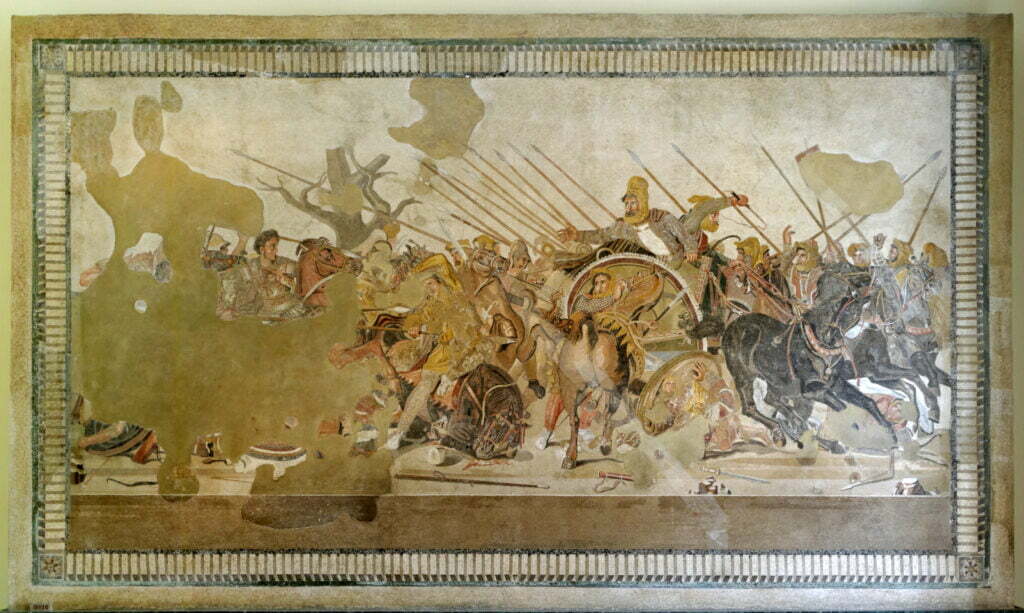

Selected Bobliography:
ליפשיץ, ע’ 2018. עידן האימפריות: היסטוריה ומנהל ביהודה לאור טביעות החותם על קנקנים. ירושלים
ליפשיץ, ע’, גדות י’, ארובס ב’ ואומינג מ’ תשס”ט. רמת רחל וסודותיה. קדמוניות 138: 77-58
שטרן, א’ תשל”ג. התרבות החומרית של ארץ ישראל בתקופה הפרסית (332-538 לפנה”ס). ירושלים
Berlin, A.M. 1997. Archaeological Sources for the History of Palestine: Between Large Forces: Palestine in the Hellenistic Period. The Biblical Archaeologist 60/1: 2-51.
Edrey, M. 2019. Phoenician Identity in Context: Material Cultural Koiné in the Iron Age Levant (AOAT 469). Münster.
Magness, J. 2012. The Archaeology of the Holy Land. Cambridge.
Nitschke, J.L., Martin, S.R., and Shalev, Y. 2011. Between Carmel and the Sea: Tel Dor: The Late Periods. Near Eastern Archaeology 74/3: 132-154.

